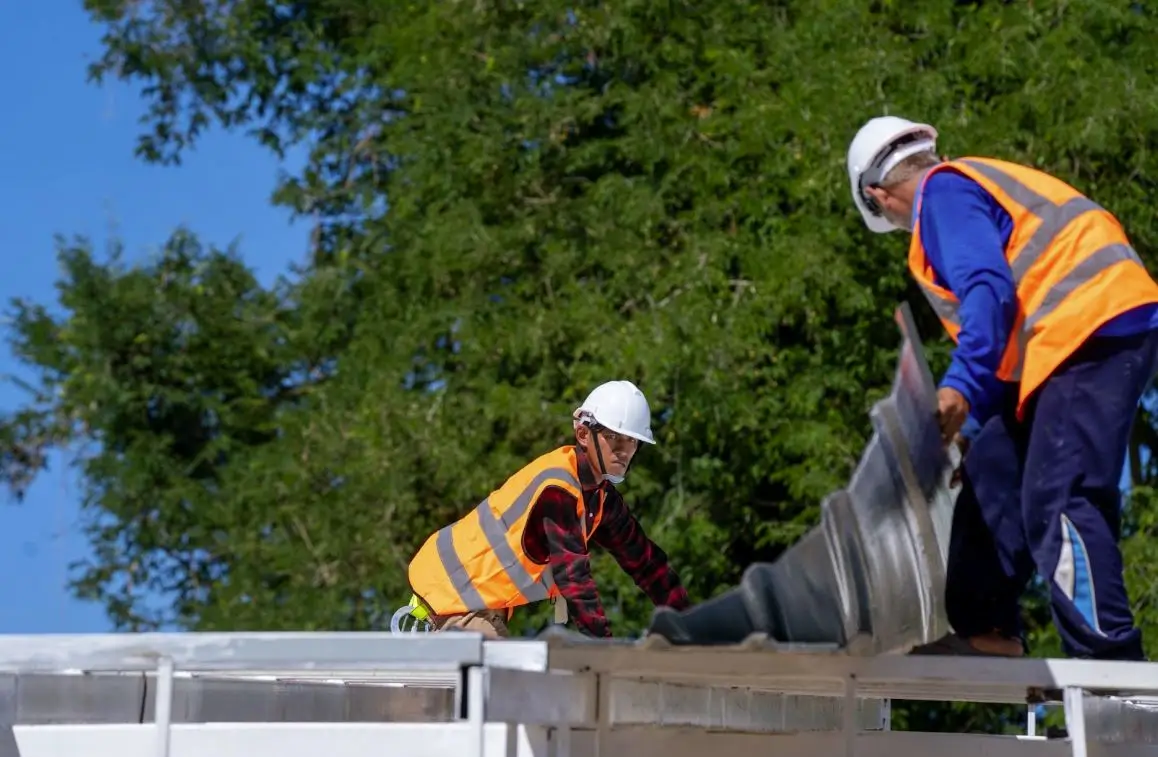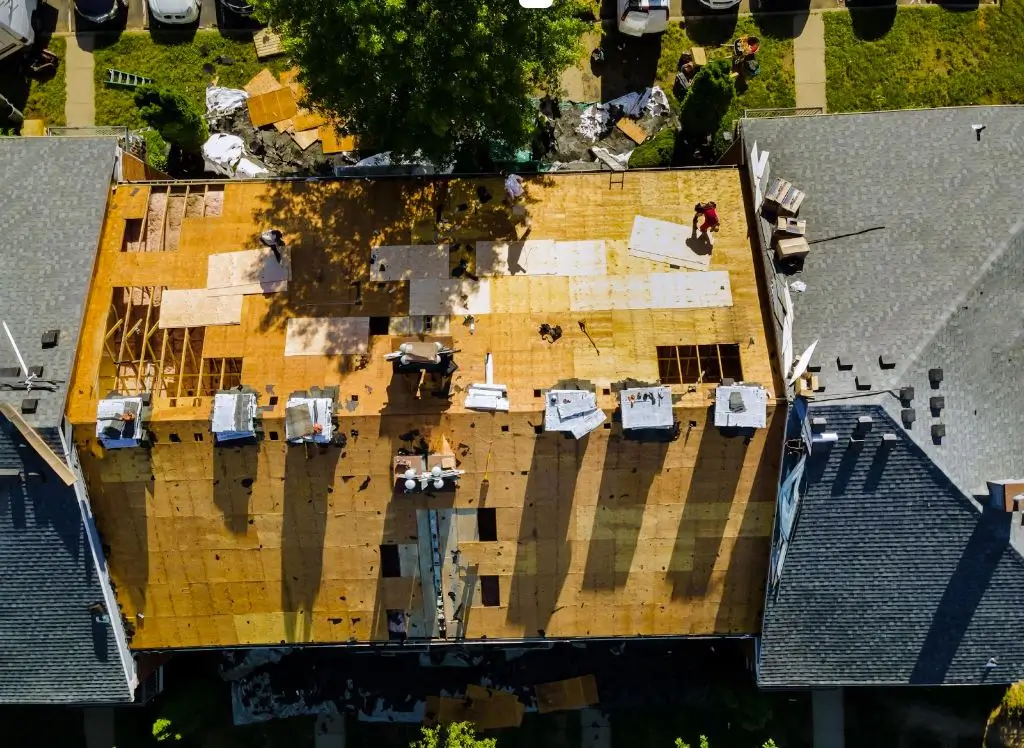

A properly installed roof protects a home from weather damage, improves energy efficiency, and enhances overall property value. The right materials and installation methods determine how long a roof lasts and how well it performs over time. Factors like climate, budget, and structural design influence roofing choices, making it essential to plan carefully. Poor quality can lead to leaks, high energy costs, and frequent repairs. Knowing the key steps involved, from selecting materials to ensuring proper maintenance, helps make informed decisions that contribute to long-term durability and performance.
A roof installation involves more than just adding shingles or metal sheets; it involves careful planning, material selection, and precise workmanship. How well a roof is installed depends on its durability, energy efficiency, and overall performance. Knowing what goes into the process helps homeowners and property managers make the right decisions for long-term protection and value.
Roofs do not last forever, and several factors can make a new installation necessary. Ignoring signs of damage or deterioration can lead to major issues, including safety hazards and expensive repairs.
Most roofing materials have a lifespan, and deterioration begins once they reach their limit. Curling shingles, brittle materials, and frequent leaks indicate that replacement is necessary. Waiting too long increases the risk of interior damage.
Severe weather conditions like strong winds, hail, and heavy rain can compromise roof integrity. Missing shingles, dents, or water infiltration weaken the structure. A complete installation is the best solution when repairs are no longer effective.
Renovations, expansions, or better energy efficiency may require a new roof. Older materials might not meet modern standards or insulation requirements. Choosing updated roofing options can improve durability and long-term performance.
Water intrusion leads to mold growth, rotting wood, and interior ceiling damage. If leaks continue despite multiple repairs, a complete roof replacement is necessary. Leaving moisture issues unaddressed can weaken the entire roofing structure.
Older roofs may not meet updated building codes or safety regulations. Compliance with modern standards is essential if a home is undergoing major renovations or being put on the market. Installing a new roof ensures proper structural integrity and legal compliance.
A well-chosen roof balances durability, energy efficiency, and budget. Climate conditions, material lifespan, and structural compatibility influence long-term performance. Evaluating these factors prevents costly repairs and enhances property value.
Roofing materials must withstand local weather patterns to prevent premature damage. Metal roofs work well in areas with heavy snow, while clay tiles perform better in hot climates. Selecting the right material reduces wear and increases durability.
Initial installation costs vary based on material and labor, but long-term expenses also matter. Cheaper options may require frequent repairs, while premium materials offer extended lifespans with minimal maintenance. Investing in quality roofing can save money over time.
The roof must complement the building’s design while meeting weight and structural requirements. Heavier materials like slate require reinforced framing, while lightweight options like asphalt shingles are more versatile. Balancing appearance and function ensures a stable and visually appealing result.
Some roofing materials offer better insulation and reflectivity, reducing heating and cooling costs. Light-colored or reflective roofs help in hot climates, while insulated metal or composite materials improve heat retention in colder regions. Choosing an energy-efficient option can lower utility bills.
Different roofing materials require varying levels of maintenance, affecting long-term upkeep costs. Asphalt shingles need periodic replacement, while metal and slate roofs offer decades of durability with minimal care. Selecting a material that fits maintenance preferences and lifespan expectations prevents frequent repairs.
Local building codes dictate roofing materials, structural requirements, and safety standards. Following these regulations ensures compliance, enhances durability, and prevents legal issues. Ignoring codes can lead to penalties, failed inspections, or costly modifications.
Roofing projects often require permits to confirm compliance with zoning laws and safety rules. Securing the correct permits prevents delays, fines, and legal disputes. Proper documentation also simplifies future renovations or property sales.

Installing a roof requires the right combination of materials to ensure durability, weather resistance, and structural integrity. Each component protects the home while contributing to the overall lifespan of the roofing system. Choosing high-quality materials reduces the risk of damage and minimizes long-term maintenance costs. Proper planning ensures that every roof layer functions effectively to provide maximum protection.
The outermost layer serves as the primary defense against the elements. Asphalt shingles, metal panels, clay tiles, and slate are common options, each offering different levels of durability and aesthetics. Selecting the right type depends on climate, budget, and personal preference.
A protective layer sits beneath the outer roofing material to provide an extra barrier against moisture. Felt paper and synthetic underlayments help prevent water infiltration and improve weather resistance. Proper underlayment selection ensures additional protection against leaks and structural damage.
Thin metal sheets seal gaps and joints around chimneys, vents, skylights, and valleys. Aluminum, copper, and galvanized steel are common choices due to their durability and resistance to rust. Properly installed flashing prevents water from seeping into vulnerable areas.
The base structure supports all roofing materials and ensures overall stability. Plywood or oriented strand board (OSB) is commonly used to provide a solid foundation. Damaged or weak decking must be replaced before installing new roofing materials.
Nails, screws, and roofing cement secure materials in place for long-term performance. Corrosion-resistant nails and specialized adhesives help withstand extreme weather conditions. Proper fastening prevents shifting, lifting, and premature roofing system failure.
Selecting the correct type of roof affects durability, energy efficiency, and overall aesthetics. Each roofing style offers unique benefits based on climate, structural requirements, and personal preference. A well-chosen roof enhances curb appeal while ensuring long-term protection against the elements. Material compatibility and maintenance demands should also be considered before deciding.
A triangular design allows for efficient water runoff and excellent ventilation. This classic style suits various climates and provides extra attic space for insulation. Strong wind resistance is necessary in hurricane-prone areas to prevent structural damage.
Slopes on all four sides create a stable structure that holds up well against strong winds. Proper drainage reduces the risk of water pooling, making it ideal for heavy rain or snow conditions. Due to its complex design, additional framing costs may be required.
A low-slope design offers a modern look and maximizes usable space for rooftop installations. Drainage systems must be appropriately designed to prevent water accumulation and leaks. Regular maintenance helps extend its lifespan, especially in areas with heavy rainfall.
A dual-sloped design increases attic space and allows for future expansion. Steep lower slopes add character while improving water drainage efficiency. Material selection is crucial in ensuring longevity and resistance to weather conditions.
A barn-style design provides a spacious upper level, making it suitable for storage or living areas. Steeper slopes enhance water runoff, preventing moisture buildup and structural issues. Additional reinforcement may be necessary in regions prone to heavy snowfall.
A proper roof installation follows a structured process to ensure durability, weather resistance, and long-term performance. Careful planning, quality materials, and skilled workmanship provide a secure and efficient roofing system. Each step strengthens the structure, prevents leaks, and improves insulation. Ignoring essential procedures can lead to costly repairs and structural issues over time:
Old roofing materials are removed, and the decking is inspected for damage. Weak or rotting sections must be replaced to create a stable foundation for the new installation. A clean and solid deck supports proper adhesion and enhances overall durability.
A protective layer is applied over the roof deck to prevent moisture infiltration. Felt paper or synthetic underlayment protects against water damage and leaks. Proper coverage helps maintain the integrity of the entire roofing system.
Metal flashing is installed around chimneys, vents, skylights, and valleys to seal potential water entry points. Drip edges along the roof perimeter direct water away from the structure, preventing moisture buildup. Secure placement helps reduce the risk of leaks and deterioration.
Shingles, tiles, or metal panels are arranged according to manufacturer guidelines. Proper alignment and fastening protect against wind damage and ensure even weight distribution. Overlapping techniques enhance water resistance and prevent premature wear.
A thorough check confirms that all materials are securely placed and properly sealed. Gutters, vents, and flashing are inspected for alignment and functionality. Any debris or leftover materials are cleared to leave the site clean and safe.

Estimating the expenses involved in a roof installation is crucial for effective budgeting. Costs can vary based on materials, labor, and the project’s complexity. Awareness of these components helps homeowners plan accordingly and avoid unexpected financial burdens.
The choice of roofing material significantly impacts the overall expense. Metal roofing sheets are priced per linear meter, with varying costs based on the profile and thickness. Opting for higher-quality materials may result in a more significant initial investment but can reduce maintenance and replacement costs over time.
Professional installation fees depend on the complexity and size of the roofing project. For a roof area between 50 to 75 square meters, the total installation cost ranges from ₱57,000 to ₱68,000, including materials and labor. Larger roofs or those with intricate designs may incur higher labor charges due to the increased time and expertise required.
Beyond materials and labor, other costs may arise, such as permits, inspections, and disposal of old roofing materials. Unforeseen structural repairs or modifications can also add to the total expenses. Allocating a portion of the budget for these potential costs ensures a smooth installation process without financial surprises.
A properly installed roof improves durability, energy efficiency, and structural stability. Poor workmanship and low-quality materials lead to leaks, costly repairs, and reduced lifespan. Careful material selection, skilled installation, and regular maintenance ensure long-term protection. Every step in the process affects performance, so making informed decisions is essential.
Learn everything about roof installations by visiting the Febres Roofing blog for expert guidance and advice.
Support
Get In Touch
Copyright © 2025 – Digital Marketing by BrandRep